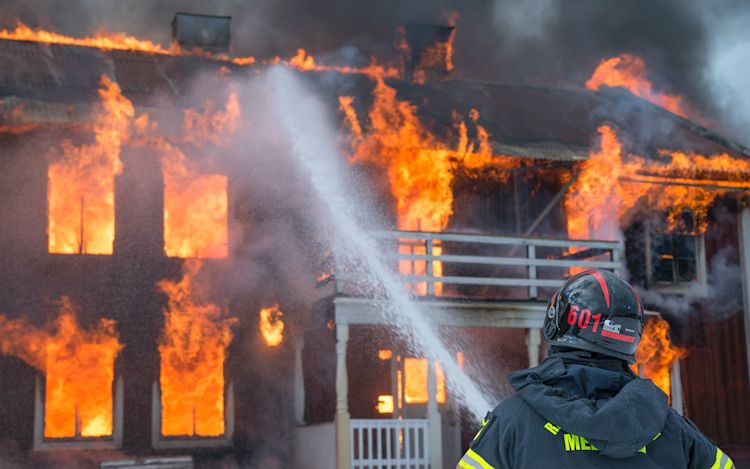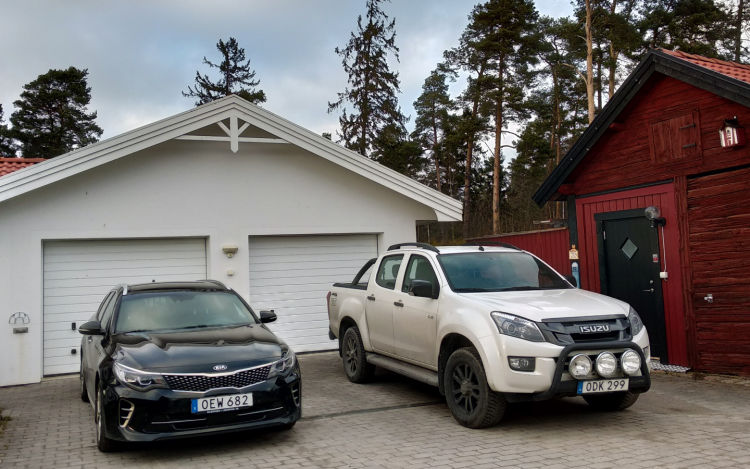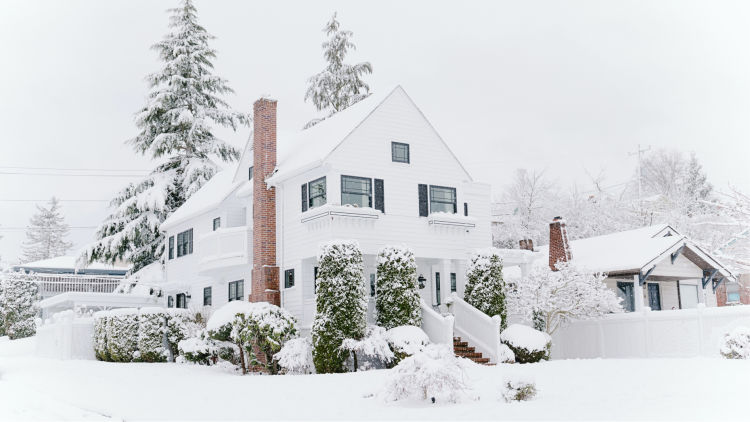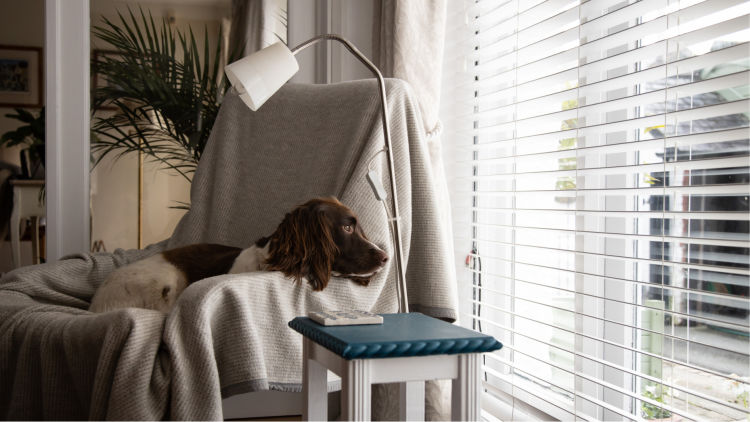10 Simple Ways to Save on Your Home Insurance
We spoke with home insurance agent Frank Jones to get the do’s and don’ts to lowering your home insurance.
by ecobee on 08/10/2022 in Life & Family
7 min read

Frank Jones, a partner at New Jersey-based Mints Insurance, is here to guide us through the right and the wrong ways to save on home insurance. With the highest inflation in 40 years, we’re all looking for ways to save!
For many people, evaluating their insurance options starts and ends with the almighty dollar. But according to Jones, a 25+ year insurance industry veteran, “The worst thing to do is to buy insurance based only on premium. You’ll be sad every time.”
1) Pay annually if you can afford to.
Jones says that every insurance company he’s aware of charges a fee to pay monthly. It’s nominal, usually between $3 to $5 but can be as high as $7. If you have the means to pay a lump sum once a year, you’ll put some money back in your pocket.

2) Beware of online quotes.
It’s easy to find insurance quotes online. All you need to do is Google “home insurance quotes.” However, Jones warns against these systems because they default to the lowest available liability limits and fail to ensure the buyer is adequately insured.
Consequently, people may end up buying lower limits and can find themselves on “the bad side of a claim when things blow up because they’ve purchased something only based on the economics, and not the impact of it.”

3) Buy an alarm system.
While Jones says that homeowners and their insurance agents should be careful in decreasing coverage in any way, shape, or form, he says investing in a professionally monitored security system is the best way to realize a discount on your home insurance.
“Without any changes to coverage, I think you’re looking at a 10% to 15% rate reduction for homes with an alarm system,” says Jones, also noting that other measures you could take to lower your premiums are not as quantifiable because they depend on the different rating factors of the various insurance companies.
ecobee Smart Security with Professional Monitoring (currently available in the U.S. only) is the best way to secure your home and save. Learn how you can protect your home with ecobee devices for $10 per month.
4) Beware of raising your deductible.
Jones says that this is often the first area people look at to lower their premiums.
However, raising your claim deductible from $500 to $1,500 or even as high as $2,500 won't result in a commensurate reduction in the premium. “Savings can be as high as $75 to $100 annually, but you should expect something more in the $30 to $40 range,” says Jones. In addition, people who raise their deductibles may be biting off more than they can comfortably chew in the event of a claim.
“I mean, how well capitalized are you? Do you have an extra $1,000 on hand? In today’s economy, I’m not sure most folks would have it,” says Jones.

5) Consider investing in your home.
Upgrades like a new roof, an updated electrical system, new HVAC equipment, and the installation of storm-safe windows and water shutoff devices are not only beneficial for your safety and the enjoyment of your home, but they can also lower your premiums.
But unlike a professionally-monitored alarm system which is guaranteed to lower your premiums by 10–15%, the premium-reducing effect of these upgrades are, again, subject to the rating factors of your insurance company.
If you are considering upgrading your home, invest in an award-winning ecobee thermostat to save up to 26%* on annual heating and cooling costs and control your comfort from anywhere.
6) Bundle your insurance.
It’s a win-win for you and your insurer. By bundling your auto with your home insurance, you’re bringing your insurance company more business, and they will usually reward you with a discount. You might be able to save as much as 15%, depending on your insurance company. Just pay attention to the cost and terms of your car coverage to make sure the bundle isn’t tied to an uncomfortably high deductible.

7) Make sure you're not over-insured.
In the event of a fire, you want your insurance company to replace exactly what you own and not with cheaper substitutes. You can document what you own by keeping receipts, serial numbers, and model info. In the process, you may find that you are over-insured for possessions and can get by with less contents insurance.
As part of making an inventory of your possessions, Jones recommends making a video. You can walk around the house showing your valuables and saying how much you bought them for: “here’s the $400 flat-screen TV we bought at Best Buy; this is our leather sectional; note the living room rug, it’s a family heirloom that we estimate is worth $5,000” and so on. Doing so will make it easier for the insurance company to validate what you had if the house burns down.

8) Consider reducing insurance on the garage.
Most insurance companies include “other structures” as a portion of the insurable property; this may consist of a garage, shed, boat house, and like structures. Jones says that some insurance companies may allow you to adjust it. How much of a premium break you receive depends on the internal deliberations of your insurer. Remember that reducing coverage increases your risk exposure in the event of a claim.
9) Consider re-estimating replacement cost.
(Save this tip for when construction costs have come back down to earth.)
Each year, the cost of replacing your home increases by a percentage determined when the agent wrote the policy. This is known as the replacement cost.
Let's say you bought your home in 2010, and the replacement cost was $200,000. By now, your home's replacement cost has grown to $290,000. In the meantime, you haven't done anything to increase its value—you didn't replace the Formica countertops with imported Italian marble or upgrade the flooring. There have been no major changes. Assuming everything in the home stayed the same, Jones says that in a pre-Covid world, this would have been a prime area for you to cut back.
Unfortunately, because of the increase in construction costs due to ongoing global supply chain issues, it is a lousy time to re-estimate replacement cost. For that reason, you may want to put this tip on the back burner.

10) Move down with caution.
There are three levels of home insurance coverage: comprehensive, which covers the building and contents for most risks; broad, which provides comprehensive coverage of the building but excludes contents not covered under the policy; and basic, which offers the narrowest coverage and carries the highest financial risk.
Though most people opt for comprehensive, Jones says which of the three coverage levels is appropriate depends on the insured.
"We have some very financially-set folks who get very, very creative in what they want to cover, and then we have other folks who come in that are living on very tight, fixed incomes who say, 'look, I can't afford comprehensive, you're going to have to give me what we can get with the cheapest possible premium.' We still go over the risks before placing them on basic."
Jones says he's always worried whenever someone without substantial means opts to save by purchasing less coverage.
"Over the years, people have been taught by agents competing for commissions and the national brands that buying insurance is a premium decision. That's the worst way to buy insurance. We’re talking about being insured cheaply and being insured properly."
He says that in a very general sense, customers are looking at an 8% to 12% difference in premium between comprehensive and basic.
"At the time of the claim, nobody remembers the $50 they saved on the premium. They know that right now they have a problem with the claim that's not covered because they choose to save $50 and not include, for example, back up for sewers and drains in their policy."
* Compared to a hold of 72°F/22°C.
Did you enjoy this article?
Thanks for letting us know!






